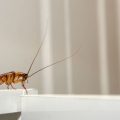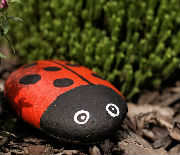
Horseflies can quickly ruin a relaxing day by the pool, turning what should be a refreshing escape into a frustrating battle against painful bites. These pests are especially drawn to swimming pools due to their reflective surfaces and the warm, moist environment.
If you’re looking for effective ways to get rid of horseflies and keep your poolside pest-free, our guide offers practical solutions, including the best horsefly repellents, DIY traps, and chemical-free prevention methods. Discover how to protect your pool and enjoy horsefly-free days all summer long.
Table of Contents
What are horseflies?
Horseflies are large, fast-flying insects known for their sharp bites. They are attracted to warm, moist environments, such as swimming pools, due to their reflective surfaces and the carbon dioxide exhaled by humans. They are most commonly found near horse stables, cattle, standing water, such as ponds and pools, slow-moving streams and rivers, and long damp grass.
As highly adapted visual hunters, they are attracted to large dark objects, movement, and carbon dioxide, all of which are traits found in warm-blooded mammals.
Do horseflies bite?
Yes, horseflies bite. Female horseflies require blood meals to produce eggs, and their bites can be painful. They use sharp, scissor-like mouthparts to cut through the skin and access blood vessels, often leaving behind a red, swollen area. Their bites can be particularly irritating due to the anticoagulant substances they inject to keep the blood flowing. Male horseflies, however, do not bite, as they feed on nectar and plant juices.
Can you get an allergic reaction to a horsefly bite?
Horsefly bites are easily recognisable as they differ from other insect bites. They are painful, itchy, and surrounded by red, swollen skin. As the bites are not puncture wounds, they also take longer to heal and are more likely to become infected. Severe allergic reactions to horsefly bites are rare, but should any of the following symptoms appear, you should contact a medical professional immediately:
- Dizziness or weakness;
- Wheezing;
- Redness and swelling around the eyes and lips;
- Swelling of the face, lips, hands, and feet;
- Tongue and throat swelling;
- Nausea, vomiting, or diarrhoea;
- Difficulty swallowing or breathing.
Why are horseflies attracted to swimming pools?
Horseflies are drawn to pools for several reasons:
- Light & Sunshine – So why are horseflies frequent visitors to your outside pool? It’s not because their butterfly skills (pun not intended) are rusty. It’s more because these species are especially attracted to light reflections. This makes your pool a natural habitat for horseflies.
- Water/Food Sources (Blood & Nectar) – Even though both female and male flies snack on flower juice, the female horsefly is the one that needs additional elements in its diet for its eggs, and that is blood. Horseflies also need water for hydration and breeding.
- Carbon Dioxide – Horseflies are attracted to the heat and carbon dioxide produced by people’s bodies. Horsefly organisms have developed natural ways to track down carbon dioxide that unsuspecting targets emit.
How to get rid of horseflies around the swimming pool?
Although they are aggressive spoilers of fun, you don’t have to let horseflies ruin your enjoyment of the pool. Here is how to eliminate horseflies near pools:
- Sticky fly paper. Unravel and hang fly paper around the pool area. These hanging strips will attract and trap horseflies, as well as other flying pests. Replace them as needed or when the paper starts to get crowded. Also, try not to walk into them. It is a disgusting experience, trust us.
- Pesticides. Spray the pool area and your immediate vicinity with natural pesticides that contain pyrethroids. These pesticides are made from dried chrysanthemum plants and are safe for use around children and pets. For other areas of your garden, alternate between using organophosphate and organochlorine-based pesticides to ensure that the horseflies won’t develop a tolerance to a specific type of pesticide.
- Light traps. The light given out by these traps was specifically developed to attract many types of flying pests. As soon as they come into contact with the light, they become zapped and, in most cases, instantly killed. Place one or more of these traps around the pool area to quickly kill the horseflies. Since they are powered by electricity, remember to place them out of reach to prevent them from getting splashed.
- Bag traps. These types of traps are made up of two elements: a bag holding fly food that attracts flies and a funnel which allows entry but stops flies from leaving. This trap appears to be one of the most effective ways to get rid of horseflies. However, the smell of fly food and trapped flies is quite pungent and overpowering. It is best to place one or more of these traps at a good distance away from the pool or any other areas where people congregate. Don’t worry about its effectiveness, though – horseflies cannot resist the bait.
- Horsefly traps. These are large, hanging traps with moving parts designed specifically to attract horseflies. By the time they realise that what they’ve landed on is not their prey, they will become trapped between the parts and killed by the heat of the sun-warmed metal. Hang this type of trap in an area that is exposed to a lot of sunlight during the day for maximum effect.
Read: How to Get Rid of Flies?
How to prevent horseflies from invading?
Effective ways to get rid of horseflies around your pool:
- Mow your lawn and weed regularly – Horseflies love long damp grass and weeds as this environment provides them with the perfect breeding ground and acts as a cool refuge during the hottest part of the day. Keeping your grass short and your garden weed-free deprives horseflies of their favoured summer retreats. This will reduce the number of little beasts that visit your garden and pool.
- Burn citronella candles and lamps around the pool area – Citrus smells repel many types of biting insects, and those few intrepid insects which brave the citrus area will find their senses dulled and will have a harder time landing on you.
- Deter horseflies in pool areas with fans – Fans can effectively help deter horseflies in pool areas. By using outdoor fans, you can create a wind barrier around the pool that makes it harder for horseflies to navigate. The moving air disrupts their flight patterns, making them less likely to settle near the pool.
- Keep the pool area free of food and trash – Almost all flies are attracted to food and trash, so make sure to maintain a clean pool area and keep bins as far away from the pool as possible.
- Cover your pool – Covering your pool when not in use reduces access for horseflies. Keep your pool covered for as long as possible during the months of June, July, and August, as these are the months during which horseflies are most active. You can still use the pool just remember to cover it when you are finished partying.
How to treat a horsefly bite?
Treating a horsefly bite is fairly simple and is similar to treating other insect bites. If you are bitten, you should:
- Clean the wound with plain warm water and a cotton cloth or cotton wool;
- Apply a cold compress to the area for 10 to 15 minutes to reduce the swelling;
- Do not scratch the bite, as it could make the wound worse or lead to an infection.
Remedies, such as vinegar or sodium bicarbonate, are not recommended as they won’t really help. It is also worth remembering that a horsefly will not leave any part of itself (stinger, mandibles) behind in the wound. Some over-the-counter treatments which can prove useful include:
- Paracetamol or ibuprofen – take any of these if the pain from the bite is too overwhelming;
- Crotamiton cream, hydrocortisone cream or antihistamine tablets – will help you fight the unbearable need to scratch the wound;
- Antihistamine tablets – sometimes ice packs aren’t enough. If that happens, go with these tablets.
Due to the way horseflies bite, the wounds are more prone to infection than with other insect bites. During the healing process, you should be wary of an infection, so keep the wound clean and resist the urge to scratch it. Signs of infection to look for are:
- The skin around the bite becomes redder;
- Increased swelling and pain;
- Pus or other discharge.
If any of the above symptoms appear, you should visit your doctor for further advice and treatment as antibiotics may be needed.
Horsefly control solutions for pool owners
Keeping horseflies away from your swimming pool requires a combination of preventive measures, natural solutions, and prompt treatments for bites. By addressing common attractants like stagnant water and providing physical barriers or traps, you can significantly reduce horsefly activity around your pool.
Natural horseflies repellents, such as essential oils and plant-based solutions, offer effective alternatives to chemical treatments, while fans and netting can provide additional protection. Understanding the behaviour of horseflies and taking proactive steps will ensure your pool remains a peaceful, horsefly-free zone throughout the summer. Always remember to treat bites promptly and seek professional advice if necessary for severe reactions.
Horseflies FAQ’s
Here are some commonly asked questions about getting rid of horseflies:
- What attracts horseflies to my pool? – Horseflies are attracted to warm, moist environments and reflective surfaces like those found in swimming pools. The carbon dioxide exhaled by humans also draws them in.
- How can I prevent horseflies from breeding near my pool? – Horseflies breed in stagnant water. Eliminating standing water around your pool area, including in flowerpots, birdbaths, or puddles, can significantly reduce breeding grounds and keep horseflies at bay.
- What are the best natural ways to repel horseflies? – Essential oils like eucalyptus, citronella, and lavender are known to deter horseflies. Planting these around your pool area or using them in sprays can help keep the pests away naturally.
- Are horsefly bites dangerous? – While horsefly bites are generally not dangerous, they can be painful and may lead to allergic reactions or infections if scratched. It’s important to treat bites properly and seek medical attention if symptoms worsen.
- How do horsefly traps work? – Horsefly traps often use attractants, such as sugary substances or UV light, to draw horseflies in. Once the flies are near the trap, they become stuck on a sticky surface or are caught in a container.
- Can I use chemical repellents around my pool? – Yes, certain chemical repellents can effectively keep horseflies away from your pool area. However, it’s important to choose those that are safe for use around water and people. Always check the label for poolside suitability.
- Do horseflies bite dogs and other pets? – Yes, horseflies can bite pets, particularly if they are outside. It’s important to keep pets indoors or use pet-safe fly repellents when they are outdoors to prevent bites.
- How do I treat a horsefly bite on my skin? – Clean the bite with soap and water, apply a cold compress to reduce swelling, and use antihistamines or hydrocortisone creams to alleviate itching. If symptoms persist or worsen, seek medical advice.
- How do I prevent horseflies outdoor? – Use fans, place natural repellents like citronella candles, and set up traps to discourage horseflies from ruining your outdoor activities. You can also limit pool use during the early morning and late evening when horseflies are most active.
- What time of day are horseflies most active? – Horseflies are most active during the day, particularly in the warmer hours of midday to early afternoon. They are attracted to the heat and activity around pools, so planning poolside events during cooler parts of the day can help reduce their presence.










Leave a Reply